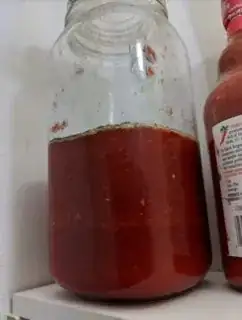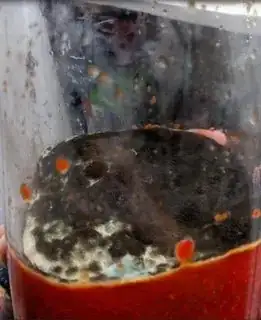We found a recipe online for homemade sriracha hot sauce.
3lbs red jalapeños
1 cup brown sugar
⅛ cup salt
Everything was blended together, then set in a dark closet. The lid is not airtight but has an elastic band holding it shut. This was to let pressure escape as the recipe suggested.
It was supposed to be left for 2 weeks in a dark place. It has been one week but I am worried about the mold on the top.
After about 2-3 days it had a white layer. I read this might be yeast so ignored it. However, it now has fuzzy black mold and I am worried.
Most hot sauce recipes I see need vinegar or something to keep it from rotting but apparently this fermentation method works fine.
Is this sriracha still ok? Can we scrape the mold off after 1 more week?


